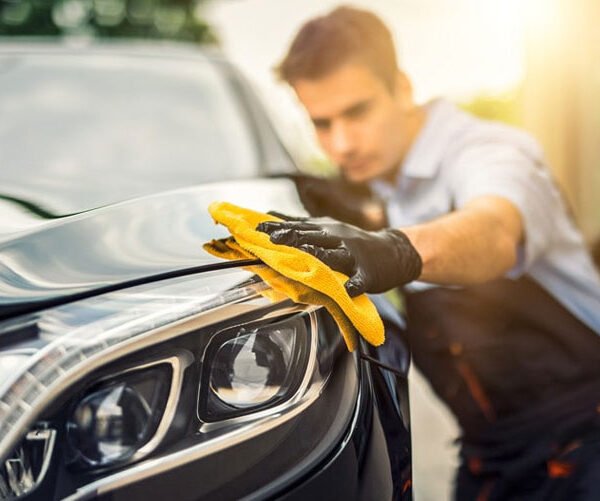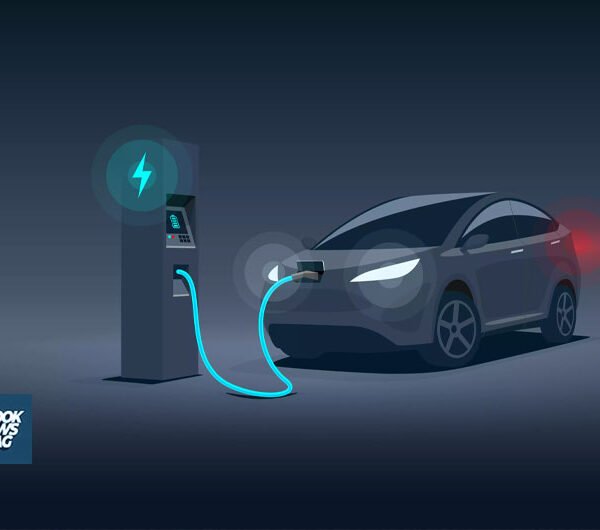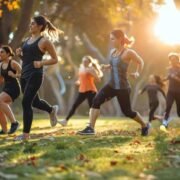Top 5 Car Safety Features
You know that feeling when you’re cruising down the highway, music blasting, and the world seems like your oyster? It’s a liberating sensation, but it also comes with some inherent risks. That’s where car safety features come into play – they’re like your trusty wingman, looking out for you and keeping you secure on those adventures.
In this article, we’ll dive deep into the top 5 car safety features that have become absolute game-changers in the automotive world. From electronic wizardry to good old-fashioned engineering marvels, these features are designed to keep you and your loved ones safe, no matter what the road throws your way.
Key Takeaways
- Electronic Stability Control (ESC) is a life-saver that helps you maintain control in slippery situations.
- Airbags are like personal safety bubbles, cushioning the impact in the event of a collision.
- Seatbelts and seatbelt pretensioners work hand-in-hand to keep you snugly secured in your seat.
- Advanced Driver Assistance Systems (ADAS) are the extra set of eyes and ears that alert you to potential hazards.
- A well-designed vehicle structure with crumple zones can make all the difference in a crash.
So, buckle up (pun intended) and let’s explore these safety superstars in detail!
Electronic Stability Control (ESC)
We’ve all been there – you’re taking a turn a little too enthusiastically, and suddenly, your car starts to skid. It’s a heart-stopping moment that can quickly turn into a disaster if not handled properly. Enter Electronic Stability Control (ESC), the unsung hero that could save your bacon in such situations.
ESC is like having a virtual co-pilot that constantly monitors your vehicle’s movements and adjusts the brakes and engine power to help you maintain control. It’s particularly handy on slippery surfaces or during sudden maneuvers, preventing the dreaded spin-out or rollover.
Here’s how it works: sensors detect when your car is veering off its intended path, and the ESC system kicks into action by automatically applying the brakes to individual wheels and reducing engine power. This helps straighten out the vehicle and keep you on track.
The effectiveness of ESC in preventing accidents is undeniable. According to the National Highway Traffic Safety Administration (NHTSA), ESC can reduce the risk of single-vehicle crashes by a whopping 35% for passenger cars and an impressive 67% for SUVs. That’s why ESC has been mandatory in all new vehicles sold in the United States since 2012.
Airbag Systems
Remember those comically oversized “safety bubbles” from old cartoons? Well, airbags are the real-life version of that concept, and they’re no laughing matter. These ingenious devices have saved countless lives by cushioning the impact during collisions.
Modern vehicles are equipped with various types of airbags, each designed to protect specific areas of the car:
- Frontal Airbags: These are the classic airbags that deploy from the steering wheel and dashboard during a frontal collision, protecting the driver and front passenger.
- Side Airbags: Mounted in the doors or seats, these airbags help protect occupants from side-impact crashes.
- Curtain Airbags: These deploy from the roof rails and provide head protection for front and rear occupants during side collisions or rollovers.
- Knee Airbags: Designed to protect the lower extremities of the driver and front passenger, these airbags deploy from the lower dashboard area.
But airbags aren’t just one-size-fits-all. Many modern vehicles now feature dual-stage airbags that adjust their deployment force based on factors like the severity of the crash and whether the occupant is wearing a seatbelt. This helps prevent injuries from overly forceful airbag deployment.
Speaking of seatbelts, proper seating position is crucial for airbag effectiveness. So, make sure you’re sitting upright, with at least 10 inches between your breastbone and the steering wheel or dashboard. That way, the airbags have enough space to deploy and do their job properly.
Seatbelts and Seatbelt Pretensioners
Ah, the good old seatbelt – the OG car safety feature that’s been around for decades. But don’t let its simplicity fool you; this humble device has saved more lives than we can count.
Seatbelts work by distributing the force of a collision across the stronger parts of your body, like your hips and shoulders. This helps prevent you from being thrown around the cabin or, worse, ejected from the vehicle entirely.
Seatbelt pretensioners are like having a dedicated valet for your seatbelt. During a collision, they instantly tighten the seatbelt, removing any slack and keeping you firmly secured in your seat. This helps prevent you from sliding forward or being thrown about the cabin.
With advancements like these, it’s no wonder that seatbelts are still considered one of the most effective car safety features. The Centers for Disease Control and Prevention (CDC) estimates that seatbelts reduce the risk of fatal injury by 45% for front-seat occupants and 60% for rear-seat occupants.
Advanced Driver Assistance Systems (ADAS)
You know that feeling when you’re driving, and suddenly, a pedestrian darts out in front of you? Or when you’re changing lanes, and another car sneaks into your blind spot? It’s enough to give even the most seasoned driver a mini heart attack.
That’s where Advanced Driver Assistance Systems (ADAS) come into play. These cutting-edge technologies act as your extra set of eyes and ears, alerting you to potential hazards and even intervening when necessary.
ADAS features can include:
- Forward Collision Warning (FCW): Using sensors and cameras, this system detects when you’re getting too close to the vehicle in front and issues a warning to help prevent a collision.
- Automatic Emergency Braking (AEB): If you don’t react to the forward collision warning, AEB can automatically apply the brakes to help avoid or mitigate the impact of a crash.
- Lane Departure Warning (LDW): This feature alerts you when you start to drift out of your lane, helping prevent unintended lane changes.
- Blind Spot Monitoring (BSM): Sensors detect when there’s a vehicle in your blind spot, alerting you with a visual or audible warning before you attempt to change lanes.
- Rear Cross-Traffic Alert: This handy feature uses sensors to detect vehicles approaching from the side when you’re backing up, helping prevent those dreaded parking lot fender benders.
The effectiveness of ADAS in preventing accidents and reducing severity is well-documented. According to the Insurance Institute for Highway Safety (IIHS), vehicles equipped with both FCW and AEB can reduce rear-end crashes by a substantial 50%.
With statistics like that, it’s no wonder that ADAS features are becoming increasingly common in new vehicles. In fact, some automakers are even making certain ADAS features standard equipment across their entire lineup.
Crashworthiness and Vehicle Structure
A well-designed vehicle structure can mean the difference between walking away from a crash or suffering severe injuries. At the heart of this design philosophy are crumple zones – strategic areas of the vehicle that are engineered to deform and absorb the energy of an impact.
These crumple zones are typically located in the front and rear ends of the car, acting as sacrificial barriers that crumple and collapse in a controlled manner during a crash. This helps dissipate the energy of the impact, protecting the passenger cabin and its occupants.
Automakers have made significant strides in using high-strength steel, aluminum, and even carbon fiber to create rigid passenger cells that can better withstand the forces of a collision. But it’s not just about brute strength; these materials are also carefully engineered to deform in a controlled manner, further enhancing the vehicle’s crashworthiness.
While these structural advancements may not be as flashy as some of the high-tech safety features we’ve discussed, they play a crucial role in keeping you safe in the event of a collision. And let’s be real – if you’re ever unfortunate enough to be in a serious crash, you’ll be thanking your lucky stars for that sturdy safety cage and those energy-absorbing crumple zones.
The Future of Car Safety: What’s on the Horizon?
Just when you thought car safety couldn’t get any better, the automotive industry is gearing up to take it to the next level. Buckle up (again, pun intended), because the future of car safety is looking brighter than ever.
One of the most significant developments on the horizon is autonomous driving technology. While the idea of a self-driving car might seem like something straight out of a sci-fi movie, it’s rapidly becoming a reality. And you know what? It could revolutionize car safety as we know it.
Think about it: human error is responsible for a staggering 94% of all car accidents. By taking the human element out of the equation, autonomous vehicles have the potential to drastically reduce the number of accidents on our roads. And with advanced sensors, cameras, and algorithms, these self-driving cars can react to potential hazards faster than any human driver ever could.
But autonomous driving isn’t the only game-changer on the horizon. Vehicle-to-vehicle (V2V) communication is another emerging technology that could enhance safety in a big way. Imagine if your car could wirelessly communicate with other vehicles on the road, sharing data about their speed, direction, and location. This constant exchange of information could help prevent accidents before they even happen, like a real-life version of those sci-fi “precog” movies.
From advanced sensors that can detect pedestrians and cyclists to external airbags that deploy to cushion the impact in the event of a collision, the future of car safety is looking out for everyone – not just those inside the vehicle.
Conclusion: Your Safety is Worth It
Phew, that was a lot to take in, wasn’t it? But trust us, learning about these top 5 car safety features was worth it. After all, your safety (and that of your loved ones) is priceless.
- Electronic Stability Control (ESC) helps you maintain control in slippery situations and prevents spin-outs or rollovers.
- Airbag Systems act as personal safety bubbles, cushioning the impact in the event of a collision.
- Seatbelts and Seatbelt Pretensioners keep you snugly secured in your seat, preventing you from being thrown about the cabin.
- Advanced Driver Assistance Systems (ADAS) are like an extra set of eyes and ears, alerting you to potential hazards and even intervening when necessary.
- A well-designed Vehicle Structure with crumple zones and a rigid safety cage can make all the difference in a crash, absorbing the impact and protecting the occupants.
And with the exciting advancements on the horizon, like autonomous driving and V2V communication, the future of car safety is looking brighter than ever. So, buckle up, stay alert, and rest assured that the automotive industry has got your back (and your front, and your sides) when it comes to keeping you safe on the road.











